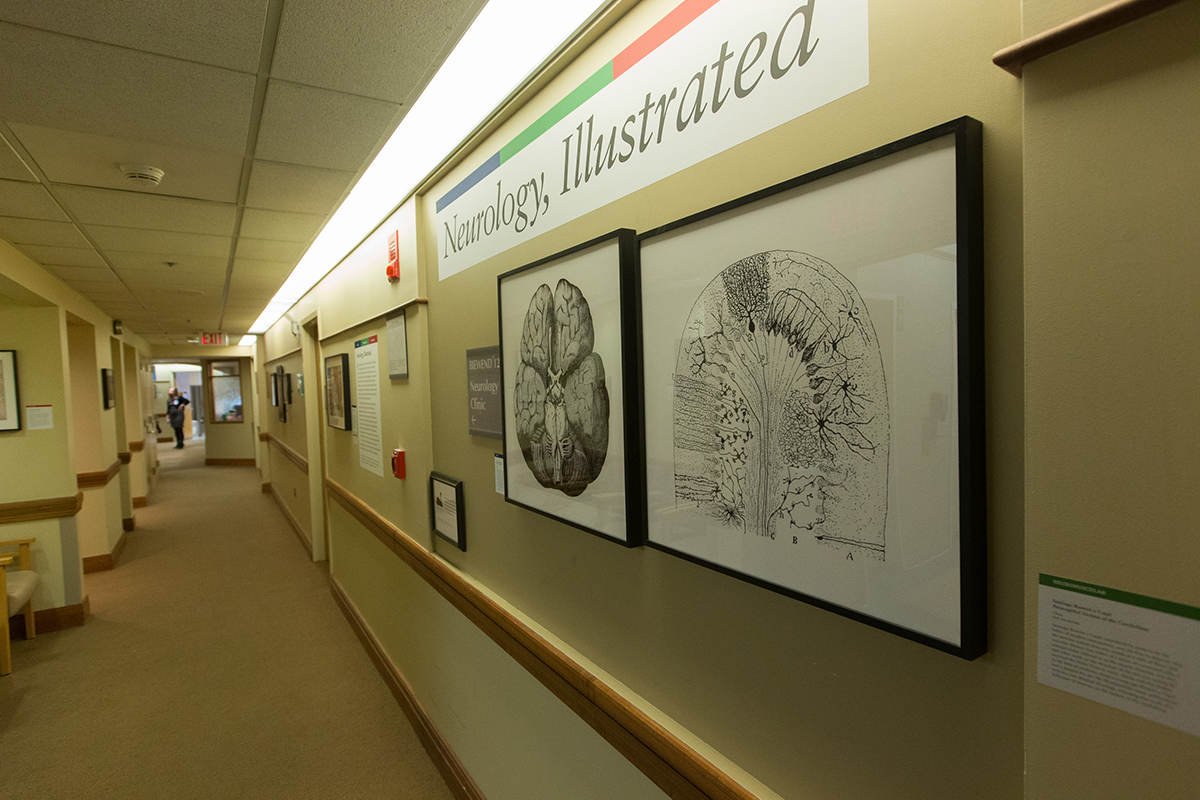Tufts Medical Center Unveils Art Exhibit Showcasing Neurology

Photo by Matthew Healey for Tufts Medical Center
What do Vincent van Gogh, King George III, and Oscar Wilde have in common? They’re all featured in a new, permanent exhibit at Tufts Medical Center that showcases different neurological disorders.
The pieces in the exhibit, which is called “Neurology, Illustrated,” span 3,000 years of artists’ depictions and artifacts showing neurological disorders, directly or implicitly. In the exhibit, the works are categorized by which part of the nervous system the condition affects: the brain, spinal cord, or neuromuscular system.
“I wanted to make the department waiting areas more attractive for patients, and this was a great opportunity to provide educational materials about neurological syndromes and how they’ve been interwoven throughout history,” says David Thaler, neurologist-in-chief at Tufts Medical Center and director of the exhibit.
The pieces, ranging from paintings to letters to limestone carvings, are presented with a description of the disorder that is shown or evoked. A van Gogh painting, for example, is accompanied by a note about the art created during the artist’s self-internment at France’s Saint-Rémy asylum and the different disorders he may have had, while a painting showing David and Goliath discusses the theory that Goliath may have had gigantism, which affects the pituitary gland.
The exhibit will live permanently in Tufts’ neurology clinic, but it’s also available for public perusal online.


